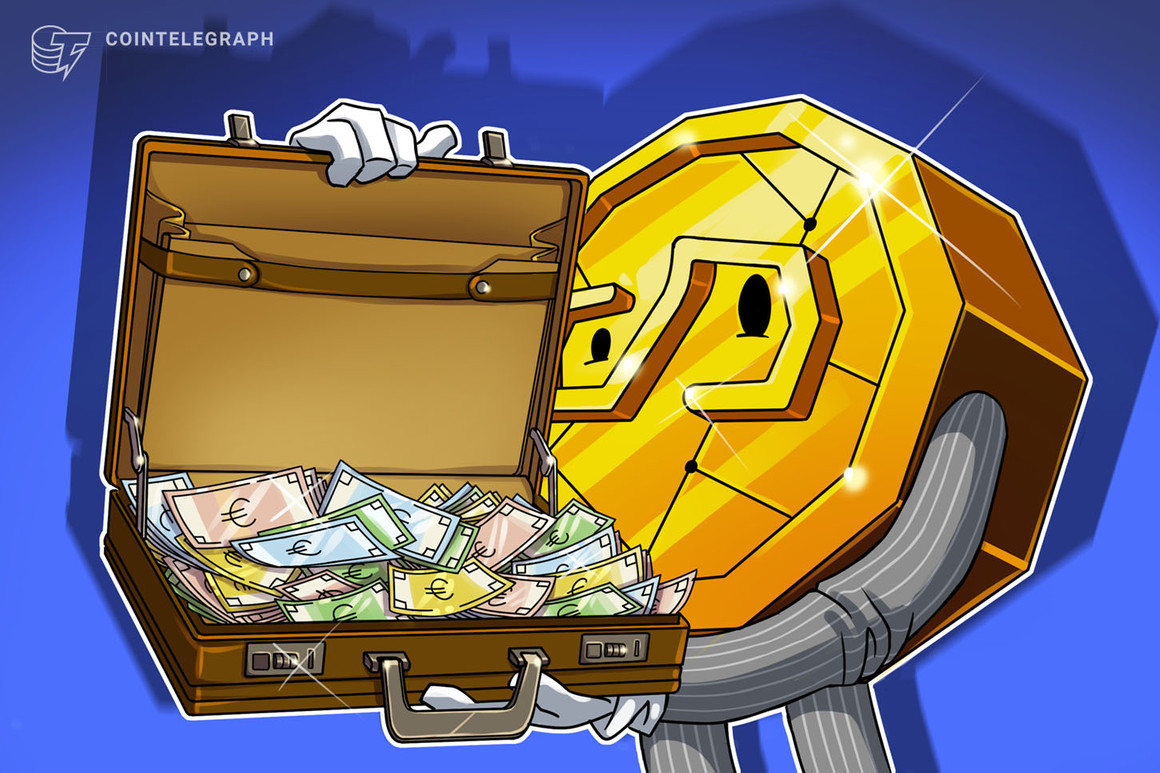Cryptocurrencies are well-known for being volatile assets, which means that experienced traders have plenty of opportunities in the space. Investors c
Cryptocurrencies are well-known for being volatile assets, which means that experienced traders have plenty of opportunities in the space. Investors can expect to be taken on a wild ride if they plan on holding for a long time.
Stablecoins, a class of cryptocurrencies that offers investors price stability pegged to the value of fiat currencies, offer investors a safe haven when market turbulence hits but may represent missed opportunities over time.
Speaking to Cointelegraph, several experts have stated that retail investors should approach cryptocurrencies with a “pay yourself first” attitude and that an allocation of up to 5% in crypto should be relatively “safe” while allowing for “marginal return.”
Stablecoins are entirely different: No “marginal return” can be expected from simply holding an asset tied to the value of the United States dollar, although yields can reach double-digit annual percentage rates (APRs) using decentralized finance (DeFi) protocols. These protocols, however, lead to higher risk.
Different stablecoins, different risks
Not all stablecoins are created equal. The largest stablecoins on the market — USD Coin (USDC), Tether (USDT) and Binance USD (BUSD) — are backed 1:1 by cash or assets with similar value by centralized companies. This means that for every token in circulation, there’s a dollar in cash, cash equivalents or bonds in custody.
For example, other stablecoins like Dai (DAI) and TerraUSD (UST) rely on different mechanisms. DAI is crypto-collateralized and ensures it can maintain its peg by being overcollateralized. It includes economic mechanisms that incentivize supply and demand to drive its price to $1.
UST, on the other hand, is a non-collateralized algorithmic stablecoin. An underlying asset doesn’t back it, as it works through algorithmic expansion and supply contraction to maintain its peg. Terra, the blockchain behind UST, has notably been building up reserves for the stablecoin. So far, it has already purchased nearly 40,000 BTC worth over $1.6 billion and over $200 million in Avalanche (AVAX).
Marissa Kim, general partner at Abra Capital Management — the asset management arm of crypto investment firm Abra — told Cointelegraph that the firm views “USDC and other U.S.-regulated stablecoins as safe as keeping reserves in a bank account,” as these are “required to prove on a regular basis that they are fully collateralized.”
To Kim, decentralized stablecoins like DAI and UST may “pose other risks,” as volatile markets could see DAI lose its peg to USD. She added its governance “is by the MakerDAO community, and nobody knows who holds and governs this protocol and where voting power may be concentrated.”
Speaking to Cointelegraph, Adam O’Neill, chief marketing officer at cryptocurrency trading platform Bitrue, said that the “role of USDC and USDT” in the cryptocurrency space is “synonymous to the role of the U.S. dollar in the traditional financial ecosystem.”
O’Neill added that investors should use stablecoins “as a go-to hedge when trading and storing their assets.” He added:
“The security outlook of stablecoin should not be compared, as both the centralized and decentralized versions are secure in themselves. However, it is not uncommon to find hackers exploit the frailty in protocols built to offer products bothering both classes of stablecoin tokens.”
To O’Neill, how much investors should allocate to stablecoins is a decision that is up to them and depends on their investment goals. Kent Barton, tokenomics lead at ShapeShift DAO, told Cointelegraph that while every stablecoin has its own risk profile, there are a few things investors should keep in mind.
For one, centralized stablecoins like USDC and USDT can be easily converted back into USD, but the entities behind these coins could “potentially blacklist certain addresses, for instance, in response to demands from legal entities.” Barton added that while there are long-standing concerns regarding USDT’s backing, it has maintained its peg so far:
“USDT has the advantage of being time-tested: It’s the stablecoin that’s been around the longest. It has deep liquidity across centralized exchanges and many DeFi platforms.”
Decentralized stablecoins like DAI and USDT, Barton said, are more transparent because of the nature of the blockchains they are built on. Still, there are other risks out there, including volatile markets threatening DAI’s over-collateralization.
To Olexandr Lutskevych, founder and CEO of crypto exchange CEX.io, the security of each stablecoin depends on how security is defined. In terms of code, technical audits should cover the risks of more susceptible stablecoins, while in terms of reliability of moving funds from A to B, most have been known to fit the purpose.
As for stablecoins’ ability to maintain their peg against the dollar, Lutskevych said how that peg is maintained should be the main focus on investors’…
cointelegraph.com
